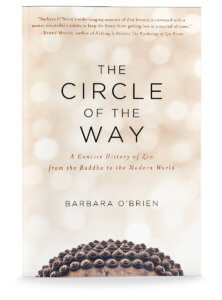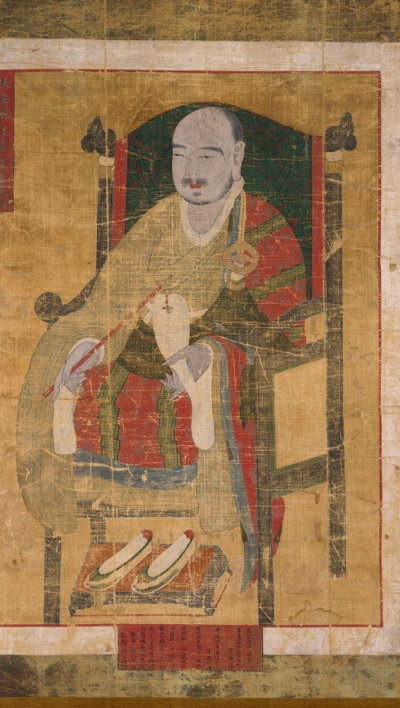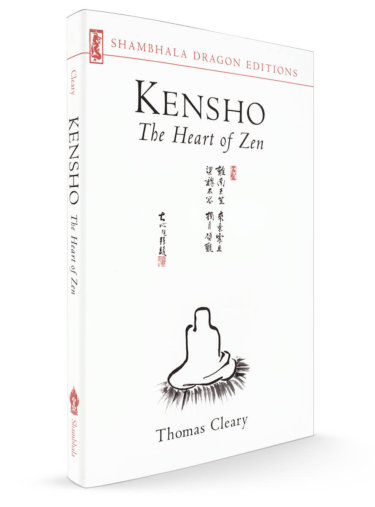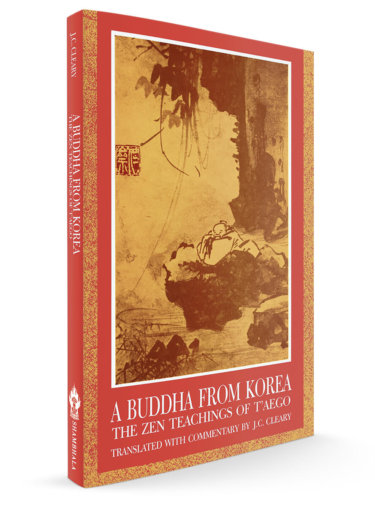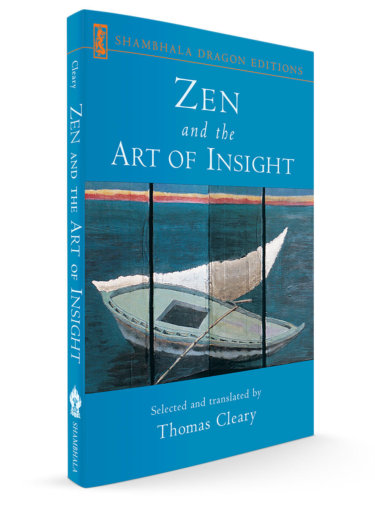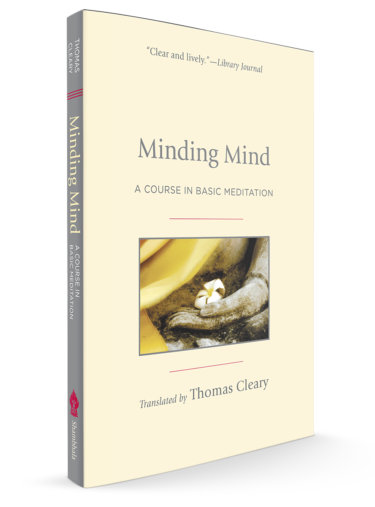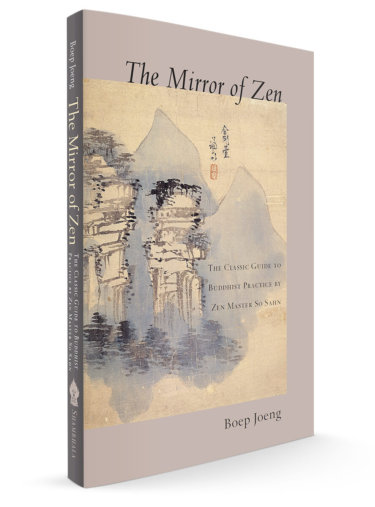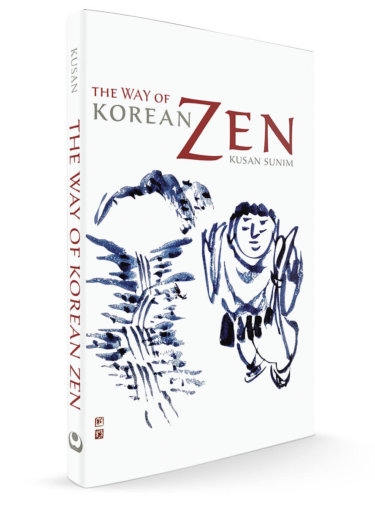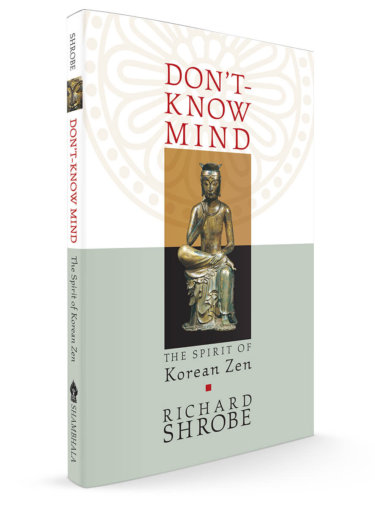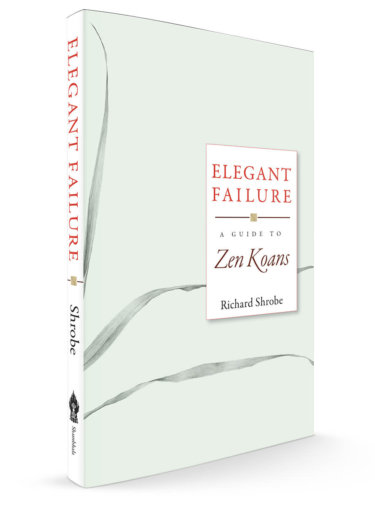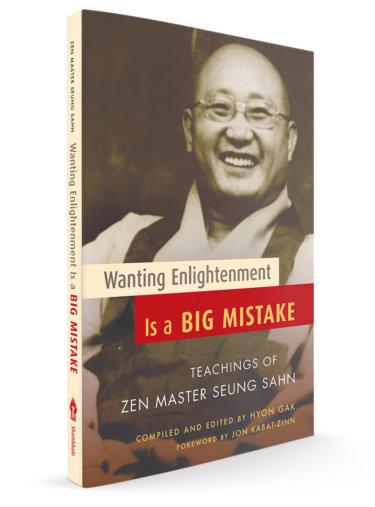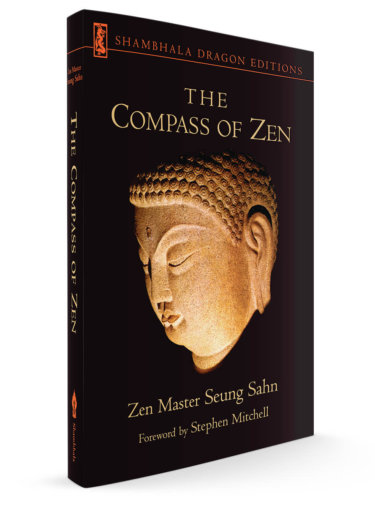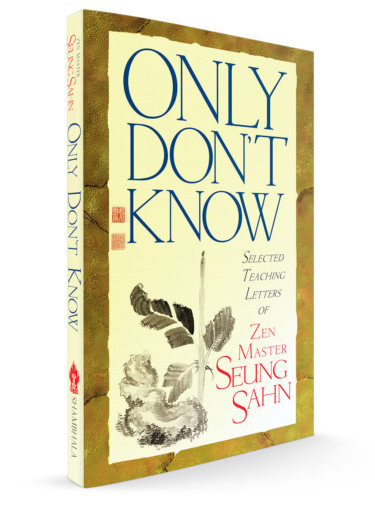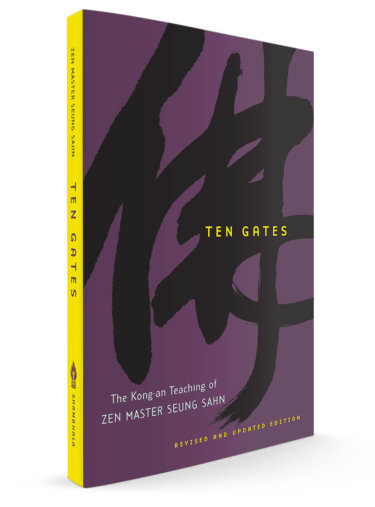
Portrait of the Great Master Seosan
From the Met
Explore Zen Buddhism: A Reader's Guide to the Great Works
Overview
Chan in China
- The Works of the Chan and Zen Patriarchs
- The Works of Zen in the Tang Dynasty (618-907)
- The Works of Zen in the Song Dynasty (960 - 1279)
- The Great Koan Collections
Zen in Korea
> The Seon Tradition of Zen in Korea
Zen in Japan
- Early Zen in Japan
- Dogen: A Guide to His Works
- Rinzai Zen
- Hakuin Ekaku: A Reader's Guide
- The Samurai and Zen
- Zen in Japan up to the Meiji Restoration
Additional Resources
- The Heart Sutra: A Reader’s Guide
- Zen in the Modern World (Coming Soon)
- Foundational Sutras and Texts of Zen (Coming Soon)
- Zen and Tea
The Circle of the Way devotes a full chapter to Seon, or Korean Zen. It begins with Buddhism's arrival in Korea in the fourth century, and then continues through Buddhism's settling in during the Three Kingdoms period (Gogurye, Baekje, and Silla) which ended in the seventh century and during which multiple Zen lineages were introduced or developed. Then came the Goryo period from the tenth to fourteenth centuries, which was the golden age of Buddhism in Korea, with royal patronage and adoption. The fifteenth through twentieth centuries were marked by varying periods of suppression and consolidation of Buddhism, but also included many bright spots such as the figure Hyujeong.
Kensho is the transformative glimpse of the true nature of all things. It is an experience so crucial in Zen practice that it is sometimes compared to finding an inexhaustible treasure because it reveals the potential that exists in each moment for pure awareness free from the projections of the ego. Among the traditional Zen works are a number of important texts focusing on the profound subtleties of this essential Zen awakening and the methods used in its realization.
One of the selections is the Straightforward Explanation of the True Mind, by Korean Zen teacher Chinul (1158-1210), which provides the contextual balance needed to understand kensho by relating it to the broader teachings of the Buddhist scriptures and treatises.
A Buddha from Korea: The Zen Teachings of T'aego
A Buddha from Korea is intended to open a window on Zen Buddhism in old Korea. The book centers on a translation of teachings of the great fourteenth-century Korean Zen adept known as T'aego, who was the leading representative of Zen in his own time and place. This is an account of Zen Buddhism direct from an authentic source.
In addition to the translation, J.C. Cleary includes a great deal of fascinating context in the lengthy introduction, which describes T'aego thus:
T'aego was an outstanding Zen teacher in fourteenth-century Koryo, the National Teacher, the man from whom all the later lineages of Korean Zen claim ultimate descent. He was born in 1301 and died in 1382, after decades at work to further the Dharma. As a famous religious leader, he lived through the turbulent period when the cosmopolitan but oppressive Mongol rule over East Asia was broken, and new regimes were emerging over decades of struggle. His was the age when gunpowder weapons and firearms spread across the old world.
Early on T'aego committed himself to the Buddhist life, and over the years he lived to the full many of its characteristic roles: youthful seeker, practicing discipline and traveling to Buddhist centers to seek wisdom; dedicated mystic, approaching wisdom with the cool intensity of the practical path; mature teacher, staying a while here and there to guide people and aid their development.
This book includes selections from the Prajnaparamita literature along with Thomas Cleary's illuminating commentary, as a means of demonstrating the intrinsic limitations of discursive thought, and of pointing to the profound wisdom that lies beyond it.
One of the selections is The Essentials of the Great Scripture on Perfect Insight, a treatise by the great seventh-century Korean Buddhist author Won Hyol (aka Wonhyo).
Minding Mind: A Course in Basic Meditation
One of the meditation manuals presented here, Secrets of Cultivating the Mind, was composed by Chinul (1158–1210), founder of the Chogye order of Korean Buddhism. Ordained as a monk at the age of eight, Chinul had no teacher. His first awakening occurred as he read a Chan Buddhist classic when he was twenty-five years old. After that, Chinul went into seclusion in the mountains. Later on, he perused the whole Buddhist canon, then went back into solitude in a mountain fastness. During this period, Chinul experienced another awakening while reading the letters of one of the great Chinese masters.
Eventually Chinul began to instruct others, establishing a number of teaching centers. He attracted the attention of the Buddhist king of Koryo Korea and was honored with the title National Teacher after his passing. Based on classical teachings, Chinul’s Secrets of Cultivating the Mind is a highly accessible primer of basic Buddhist meditation, defining and contrasting the principles and methods of sudden and gradual enlightenment.
The Mirror of Zen: The Classic Guide to Buddhist Practice by Zen Master So Sahn
Zen Master So Sahn (1520–1604) is a towering figure in the history of Korean Zen. In this treasure-text, he presents in simple yet beautiful language the core principles and teachings of Zen. Each section opens with a quotation—drawn from classical scriptures, teachings, and anecdotes—followed by the author’s commentary and verse. Originally written in Chinese, the text was translated into Korean in the mid-twentieth century by the celebrated Korean monk Boep Joeng. An American Zen monk, Hyon Gak, has translated it into English.
The power and simplicity of the Korean Zen tradition shine in this collection of teachings by a renowned modern master, translated by Martine Batchelor. Kusan Sunim provides a wealth of practical advice for students, particularly with regard to the uniquely Korean practice of hwadu, or sitting with questioning. An extensive introduction by Stephen Batchelor, author of Buddhism without Beliefs, provides both a biography of the author and a brief history of Korean Zen.
Don't-Know Mind: The Spirit of Korean Zen
"Don't-know mind" is our enlightened mind before ideas, opinions, or concepts arise to create suffering. Practicing with don't-know mind has long been a central concern of Korean Zen. Here, an American Zen teacher in the Korean lineage brings the teaching to life by using stories about the Chinese and Korean Zen masters as jumping-off points for his own teaching. Don't-Know Mind is a clear, direct, and heartfelt presentation of Zen teaching applicable to anyone, both for formal practice and for all the rest of life.
Zen koans are stories of exchanges between Zen masters and their disciples at the moment of enlightenment or near-enlightenment. These stories have long fascinated Western readers because of their wisdom, humor, and enigmatic quality. Drawing on over thirty years of practice and teaching, Richard Shrobe (himself a recognized Zen Master) has selected twenty-two cases from The Blue Cliff Record, Book of Serenity, and Wu-men-kuan that he has found to be deeply meaningful and helpful for meditation practice. In Elegant Failure, he provides a wealth of background information and personal anecdotes for each koan that help to illuminate its meaning without detracting from its paradoxical nature. As Shrobe reminds us, “The main core of Zen teaching is the bare bones of what is there. In a certain sense, embellishing a story takes away from the central teaching: Don’t embellish anything, just be with it as it is.”
Korean Zen Master Seung Sahn
Zen Master Seung Sahn (1927–2004) was the first teacher to bring Korean Zen Buddhism to America, having already established temples in Japan and Hong Kong. In 1972 he came to the United States and started what became the Providence Zen Center, the first center in what is now the Kwan Um School of Zen, which now includes more than eighty centers and groups worldwide. His students called him Dae Soen Sa Nim, "Great Honored Zen Teacher," and he was the 78th Zen master in his line of dharma transmission in the Chogye order of Korean Buddhism. We have several works by this extraordinary teacher, profiled below.
Wanting Enlightenment Is a Big Mistake: Teachings of Zen Master Seung Sahn
Zen Master Seung Sahn was known for his powerful teaching style, which was direct, surprising, and often humorous. He taught that Zen is not about achieving a goal, but about acting spontaneously from “don’t-know mind.” It is from this “before-thinking” nature, he taught, that true compassion and the desire to serve others naturally arises. This collection of teaching stories, talks, and spontaneous dialogues with students offers readers a fresh and immediate encounter with one of the great Zen masters of the twentieth century
The Compass of Zen is a simple, exhaustive—and often hilarious—presentation of the essence of Zen by a modern Zen Master of considerable renown. In his many years of teaching throughout the world, the Korean-born Zen Master Seung Sahn became known for his ability to cut to the heart of Buddhist teaching in a way that is strikingly clear, yet free of esoteric and academic language. In this book, based largely on his talks, he presents the basic teachings of Buddhism and Zen in a way that is wonderfully accessible for beginners—yet so rich with stories, insights, and personal experiences that long-time meditation students will also find it a source of inspiration and a resource for study.
Only Don't Know: Selected Teaching Letters of Zen Master Seung Sahn
Here is the inimitable Zen Master Seung Sahn up close and personal—in selections from the correspondence that was one of his primary modes of teaching. Seung Sahn received hundreds of letters per month, each of which he answered personally, and some of the best of which are included here. His frank and funny style, familiar to readers of Dropping Ashes on the Buddha, is seen here in a most intimate form. The beloved Zen master not only answers questions on Zen teaching and practice, but applies an enlightened approach to problems with work, relationships, suffering, and the teacher-student relationship.
Ten Gates: The Kong-an Teaching of Zen Master Seung Sahn
Through the experience of seeing a modern Zen master work with his students, you can see what koan training is really like: It’s a skillful, lively practice for attaining wisdom.
This book presents the system of ten koans that Zen Master Seung Sahn came to call the “Ten Gates.” These koans represent the basic types one will encounter in any course of study. Each of the ten gates, or koans, is illuminated by actual interchanges between Zen Master Seung Sahn and his students that show what the practice is all about: it is above all a process of coming to trust one’s own wisdom, and of manifesting that wisdom in every koan-like situation life presents us with.


